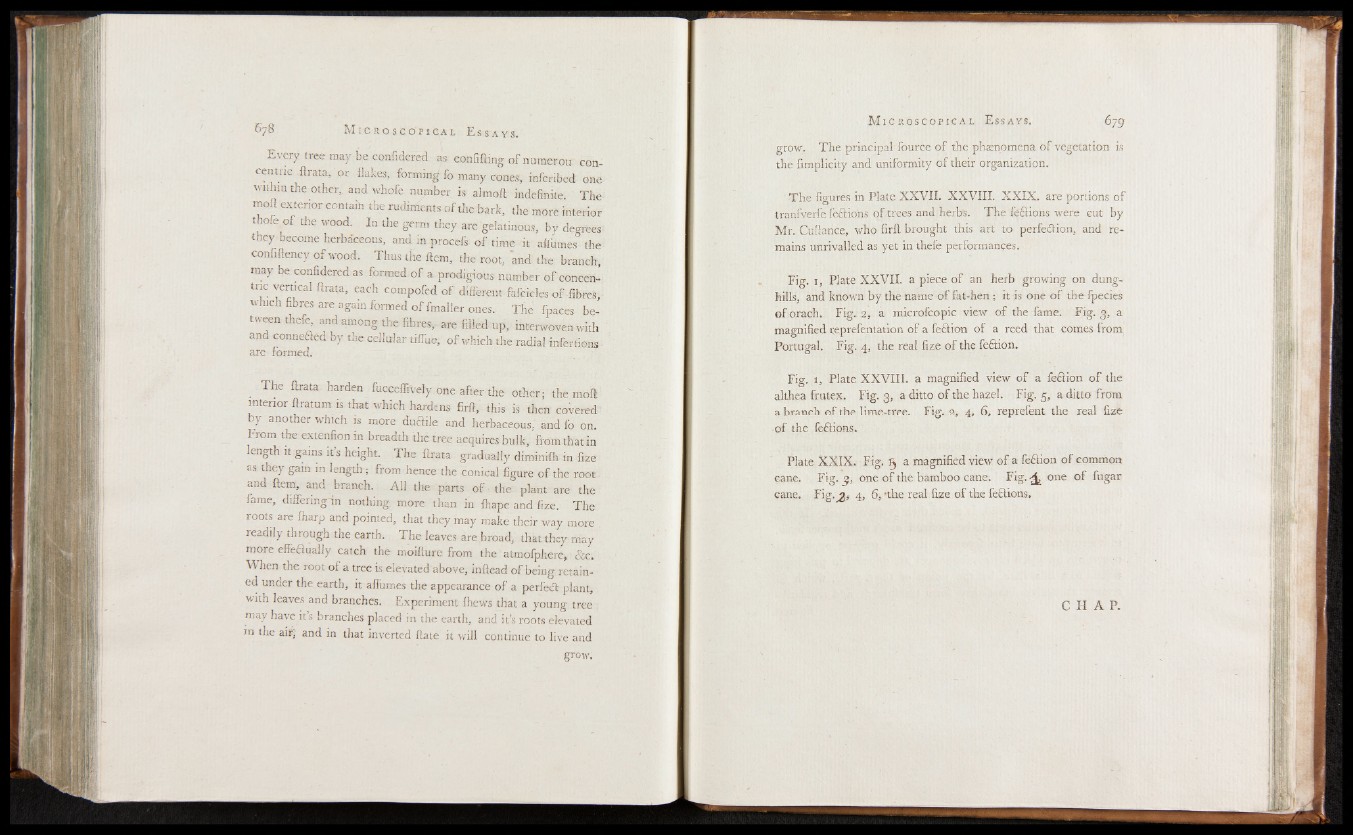
Every tree may be confidered as con lifting of numerou concentric
ftrata, or flakes, forming fo many cones, infcribed one
withm the other, and whofe number is almoft indefinite The
moft exterior contain the rudiments o f the bark, the more interior
thofe o f the wood. In die germ they are gelatinous, by degrees
they become herbaceous, and in procefs o f time it affumes the
confiftency o f wood. Thus the Hem, the root, 'and the branch,
may be confidered as formed o f a prodigious number o f concen-
tnc vertical ftrata, each compofed o f different fafcicles o f fibres,
which fibres are again formed o f fmaller ones. The fpaces between
thefe, and among the fibres, are filled up, interwoven with
and conneded by the cellular tiffue; o f which the radial infertions
are formed.
. Tile ftrata harden fucceflively one after the other; the moft
interior ftratum is that which hardens firft, this is then covered ^
by another which is more duffle and herbaceous, and fo on.
From the extenfion in breadth the tree acquires bulk, from that in
length it gains it s height. The ftrata gradually diminifh in fize
as they gain in length ; from hence the conical figure o f the root
and Hera, and branch. All the parts of the plant are the
fame, differmg-m nothing more than in fhape and fize. The
roots are fharp and pointed, that they may make their way more
readily through the earth. The leaves are broad, that they may
more effedually catch the moifture from the atmofphere, &e.
When the root o f a tree is elevated above, inftead of being retained
under the earth, it affumes the appearance o f a perfect plant,
with leaves and branches. Experiment fhews that a young tree
may have it’s branches placed in the earth, and it’s roots elevated
in the air; and in that inverted ftate it will continue to live and
grow.
grow. The principal fource of the phenomena of vegetation is
the fimplicity and uniformity of their organization.
The figures in Plate XXVII. XXVIII. XXIX, are portions o f
tranfverfe leclions of trees and herbs. The fedions were cut by
Mr. Cuftance, who firft brought this art to perfection, and remains
unrivalled as yet in thefe performances.
Fig. 1, Plate XXVII. a piece of an herb growing on dunghills,
and known by the name o f fat-hen ; it is one of the fpecies
o f orach. Fig. 2, a microfcopic view o f the fame. Fig. 3, a
magnified ceprefentation of a fedion of a reed that comes from
Portugal. Fig. 4, the real fize o f the fedion.
Fig. 1, Plate XXVIII. a magnified view o f a fed ion o f the
althea frutex. Fig. 3, a ditto of the hazel. Fig. 5, a ditto from
a branch of the lime-tree. Fig. 2, 4, 6, reprefent the real fize
o f the fedions.
Plate XXIX. Fig. 5 a magnified view o f a fedion o f common
cane. Fig. 9, one o f the bamboo cane. Fig. 4, one o f fugar
cane. Fig. % 4, 6, 'the real fize of the fedions.
C H A P .